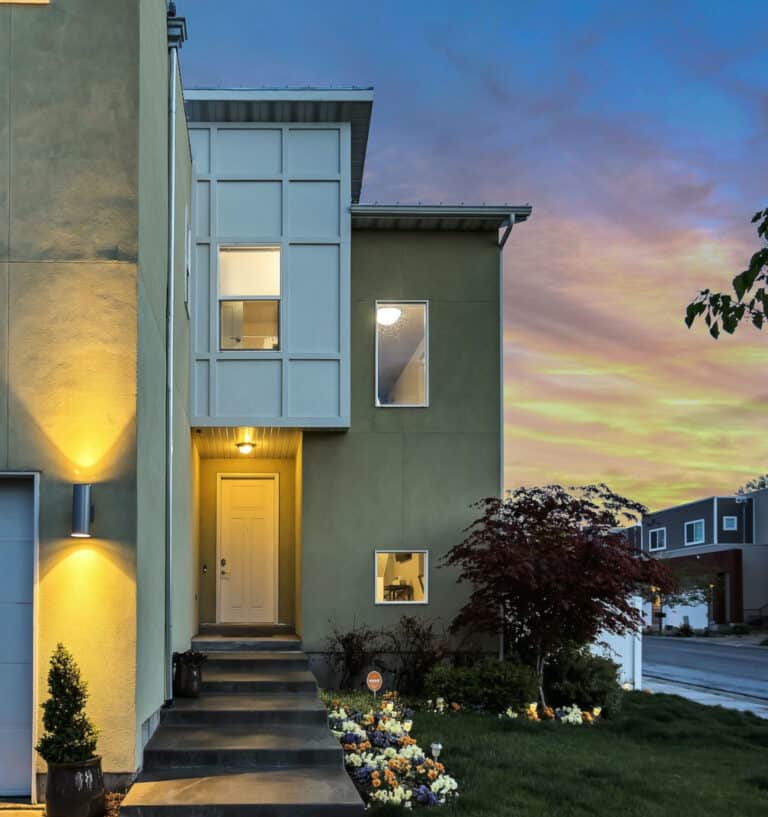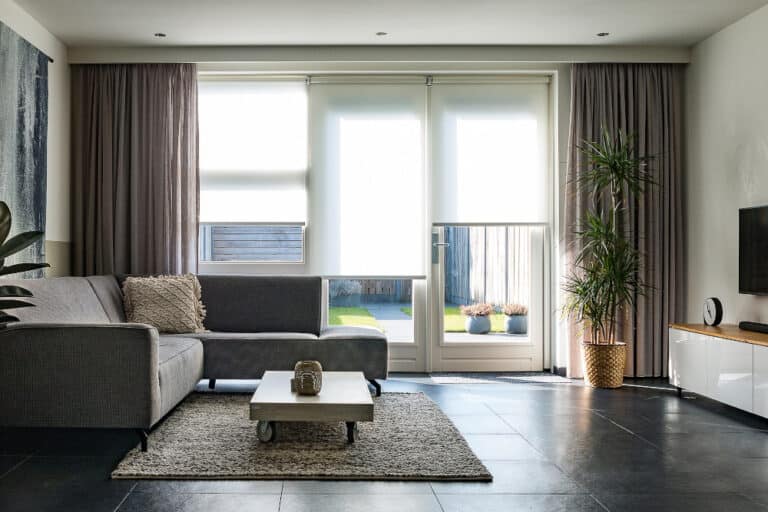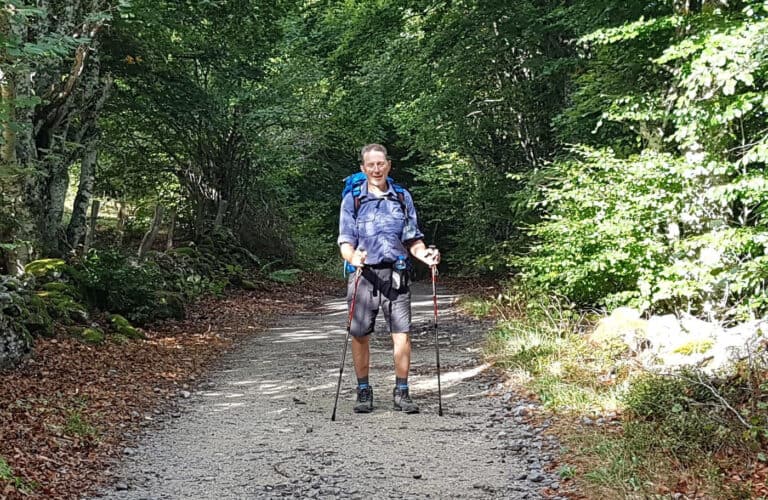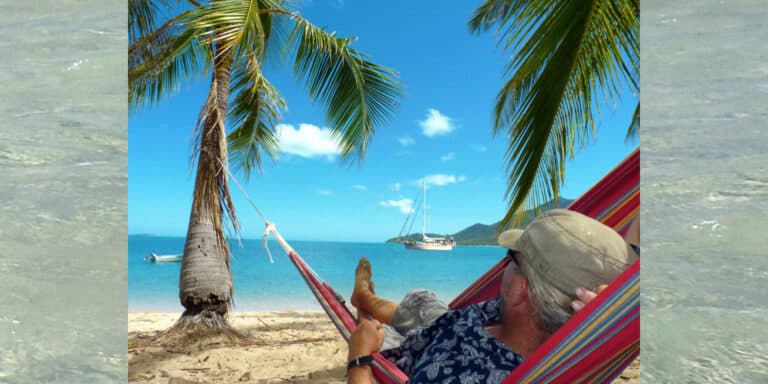16 Best Bicycle Features for Golden Years Cycling
Introduction
When it comes to considering buying a bicycle, there are so many brands and styles available in different countries that it is more practical to focus on the best features suitable for your particular style of cycling, rather than the brand.
We focus here on the 16 best features for a multi-purpose bicycle for people in their Golden Years. These features are based on the personal experience of the writer over many years of general cycling, mostly on tarmac and gravel trail surfaces.
Have a look at the article here about one of the wonderful cycling adventures we’ve had on a beautiful cycleway here in northern Portugal.
Type of Cycling, Maintenance
The particular features listed below are appropriate for general cycling rather than more advanced or extreme mountain biking activity for example. Features for road racing bicycles are not covered either. My bicycle is a hybrid street-trail model and it has served me very well for probably 6 or 7 years now, and many thousands of kilometers.
That said, it is important to carry out regular small maintenance and upkeep tasks on any bicycle, such as chain and cable lubrication, brake adjustments, brakepad renewal, etc. If it’s not something you want to do, you could just take your bicycle to your local bicycle store from time to time and they will usually carry out these regular maintenance tasks for a modest charge.
Clothing Not Covered
Fashion or image-related clothing for cycling activity is not covered here. There is nothing wrong with cycling attire of those types and they are a legitimate choice if such things are important to the individual. However, I have found that more general sporting clothing is quite suitable and would be my particular choice.
Best Features
With that, let’s go ahead and look at the best features. These are covered in what the writer would see as a reasonable order of priority, with rider safety at the top, and then comfort and control.
1. Helmet and Glasses
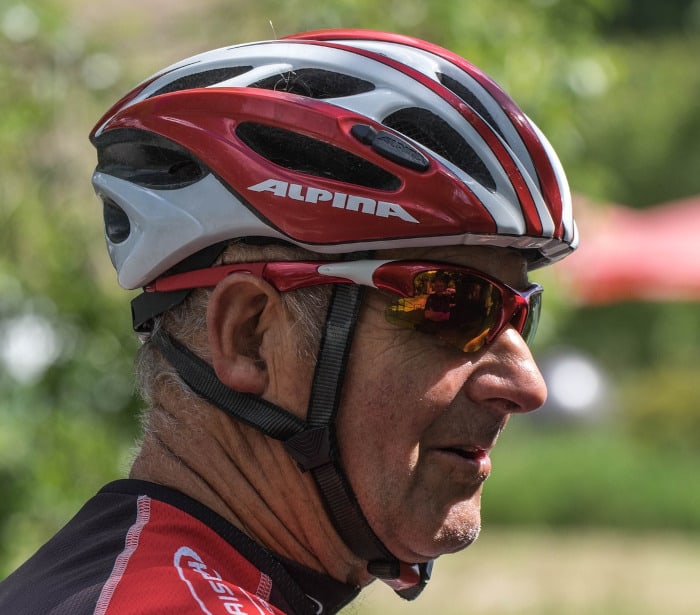
Vital accessories rather than bicycle features, but should clearly be top of the list for any responsible cyclist. There are so many styles available that it would just come down to personal choice. Probably best to just visit your local bicycle accessories store, view what’s available and take the advice of in-store experts. A helmet should have a peak to help with shading the eyes from the sun and also provides some wind,
dust and bug protection for the eyes. Glasses serve the same function, but better. The level of tinting of the glasses can be chosen to suit most of the conditions expected, and it’s a great help when cycling in bright sunshine.
2. Lights
I have put this right up there on the priority list for safety items. However, it does depend on whether cycling in reduced vision conditions or night time is envisaged. A good set of lights, white front and red rear, and reflectors are vital under these conditions and should not be neglected. I have used a set of USB-rechargable flashing LEZYNE LED lights front any rear for years under all conditions. They have been excellent and I can strongly recommend them.
.
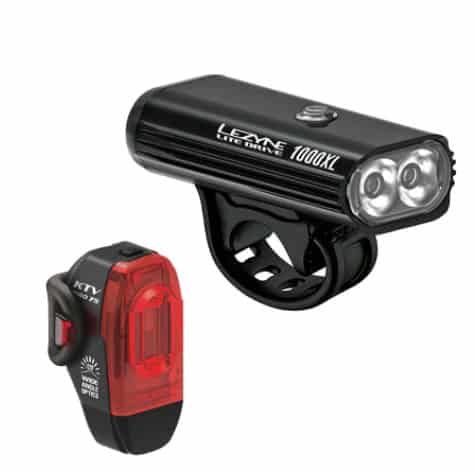
3. Comfortable saddle
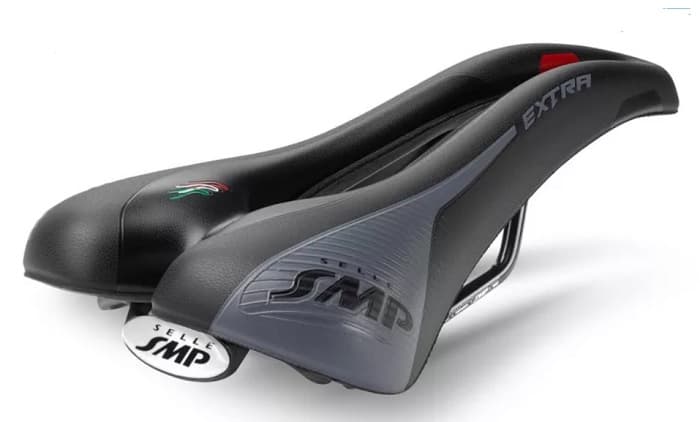
No matter what saddle or saddle cover one chooses, it takes a while to condition the body contact parts to sitting in the saddle for anything more than maybe about 20 or 30 minutes, maybe less. Simple physiology and physics I’m afraid and I know of no way past that particular challenge,
other than build up time in the saddle at regular intervals.
Superficially it may seem that some large, soft saddle will do the trick. It might help a bit, but there’s no magic formula. Custom saddles, gel covers and the like are available, and for some people they may be worth considering. But time in the saddle, built up slowly and regularly, is the key. Most bicycles come with a standard saddle for the particular model. I’ve always been fine with the standard saddle my bicycle came with. So it’s reasonable to just go with that and get on with the conditioning process.
We now come to the second-most important safety aspect of cycling, and it’s relevant to all but the die-hards, competitive cycling types, and frequently ignored or missed by many who should know better.
It comes down to avoiding falling off the bicycle to the maximum practicable degree, vital for anybody, but certainly for people in their Golden Years.
So I’ll go into it in a little depth, and it has to do with saddle height adjustment.
Ask most people who consider themselves cyclists of some tenure, and they will say when sitting in the saddle your leg should be almost straight at the bottom of the pedal stroke. This advice is particularly given by younger bicycle shop sales assistants who don’t know any better, and most people who consider themselves to be ‘good’ cyclists of some description or other. So clearly they are suggesting the saddle height adjustment should accommodate an almost straight leg at the bottom of the pedal stroke.
While out on the cycle trails we have even had some older, grey-haired, ‘hot-shot’ cyclists in the hi-viz lycra gear come alongside and advise us that our legs are ‘too bent’ while we’re cycling and we need to raise the saddles. Unsolicited and poorly informed advice.
The problem is this, in most cases. It’s a simple fact that over time no matter how competent and experienced a cyclist one is, an occasion or occasions will, not ‘may’, ‘will’, arise when one has to stop very quickly, or even make an emergency stop. It doesn’t take much imagination to come up with scenarios where this might be possible or even likely. Children, dogs, and people or other cyclists just being generally irresponsible, careless and stupid to name a few. Normal. How can we reasonably mitigate against all this?
We need to be able to get both feet on the ground as quickly as possible, to avoid or reduce the possibility of toppling over. Many cyclists in their Golden Years may not be nimble enough, or react quickly enough, to hop out of the saddle in a fraction of a second and get both feet on the ground in a wide, balanced stance.
So the simple and logical answer is to adjust saddle height such that one can put the balls of both feet on the ground simultaneously in a reasonably wide stance while still seated in the saddle. Sure, one’s legs will be a little more bent than optimal at the bottom of the pedal stroke, but it is a much safer setup, and it’s more comfortable to mount the bicycle in the first place. It is also a much better ‘stop and go’ configuration if one is in a crowded cycling environment.
4. Bell
Ok, this may rankle some of the macho or image-conscious types. But the reality is if your cycling takes you into the proximity of other people, including other cyclists, dogs and dog-owners, etc., this is an important piece of safety equipment to have on board. I use the bell on my bicycle very frequently to bring attention to my presence before some problem arises.
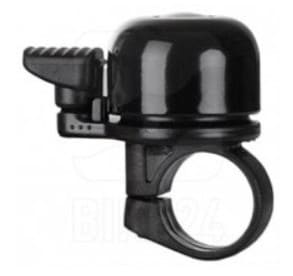
5. Flatter or swept-back handlebars
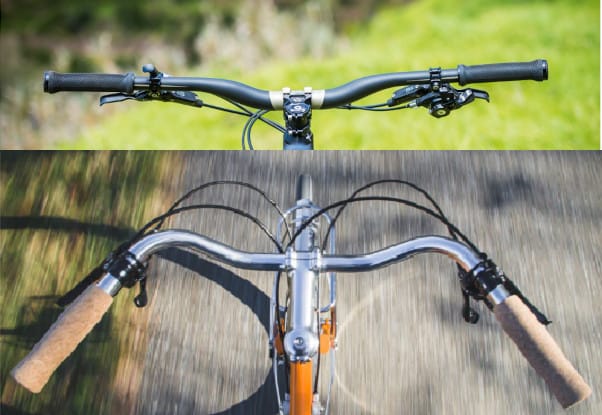
Simply, in my opinion drop-style (racing, touring) handlebars are not optimal for general cycling or Golden Years cyclists as most of our cycling time is not spent trying to be ‘aerodynamic’ or project a ‘speedy gonzales’ image. Drop bars require a riding position that is too prone. Flat bars in general, or swept-back bars with adjustable stem for a more upright riding position are more suitable.
6. Tyres
The best choice is a dual tarmac/trail type tyre. These offer a reasonably low rolling resistance, acceptable off-road grip, good durability, all combined with good puncture resistance. For example, the Schwalbe Al Grounder or a comparable tyre would be a good choice.
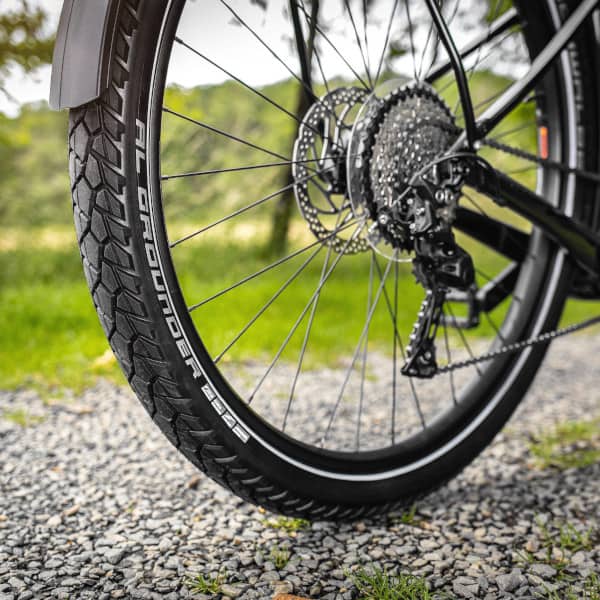
7. Gears
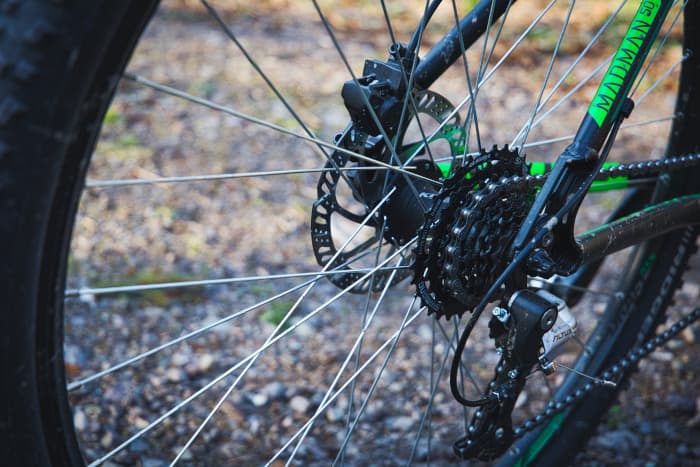
It’s not likely we’ll be able to get our perfect choice of gears and if you want to know more about that, read the rest of this section. So what might the best choice be? If one can’t get 11 or 12 gears all on the back cassette with just one chain ring at the front, my recommendation would be 6 or 7 gears on the
back cassette with a set of 2 chain rings at the front.
Most advertisements and sales pitches these days make a big deal about the huge number of gears on the particular bicycle brand and model. Sorry to say, but this is just pure sales bait for the under- or uninformed. When I bought my bicycle I would have been in this category of buyer too. My bicycle has 9 gears on the rear wheel cassette, and 3 sprockets on the front chain ring set. That makes a total of 27 gears – sounds so impressive!
And it’s nonsense! Here’s why.
The vast majority of the gears overlap in speed. So what you have is a huge gearing set that is mediocre over the entire range, has mediocre reliability, overweight with excessive complexity, and is particularly good at nothing! But guess what, it is a huge plus for the marketers!
The more gears, the more complexity, fiddly adjustments required to keep it all in working order, and higher likelihood of problems with the gear changing cables and mechanisms. And the longer it takes to be able to use them effectively. It also adds unnecessary weight.
In the 6 or 7 years and thousands of kilometers I’ve used this particular bike now, I have never, ever, used the smallest sprocket on the front chain ring set. That means straight away there are 9 gears I’ve never used, ever. And I have also only ever used the top 3 gears on the largest front chain ring. And that would be extremely infrequently, with a good following wind on very flat, smooth tarmac terrain or slight downhill. That doesn’t happen very often! So there’s another 6 gears that have never been used!
What’s left? 12 gears that have done 100% of the work over many years and thousands of kilometers, 99% of the time being the middle chain ring gear set.
If I was asking for the perfect gear configuration for me, what would it be? I would have one extra high gear and one extra low gear, all on the back wheel sprocket, making a total of 11 gears on the back sprocket. All with just 1 front chain ring. This would do away with a whole lot of complexity, weight and potential for problems, and make maintenance much more straightforward. It would also make the gears much simpler to use and manage, in addition to providing the full range of gearing I’m likely to use. So, please, manufacturers, WAKE UP! Say on the very rare occasion of ending up on a slope that needed even lower gearing – well, get off and walk. It’s likely to be very rare and if the trail or road is that steep or rough, it’s safer and makes more sense to walk and push the bike! We’re not out there to compete with some young testosterone-saturated youth. We’ve been through all that years ago! Ok, that’s it on gears.
8. Brakes
The way to go is cable-operated disk brakes front and rear. They are reliable and more powerful than the more traditional V-type brakes. They are also much better in the wet than the V-types. If you want to go the whole hog you could opt for hydraulic disk brakes. They are much more positive and direct in their operation than the cable-operated versions.
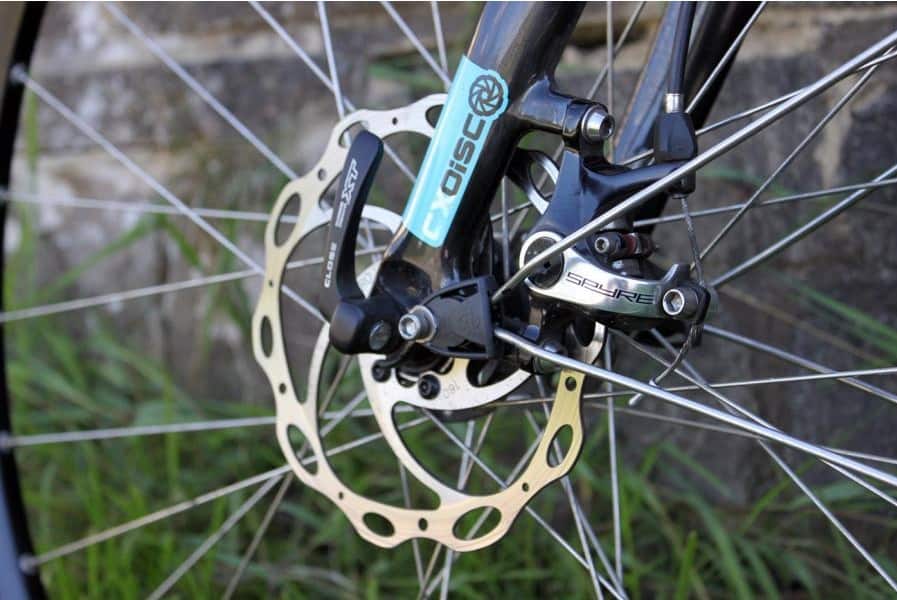
On the other hand they add more complexity and would not be as straight forward to maintain. But cable-operated or hydraulic are good choices.
9. Locks
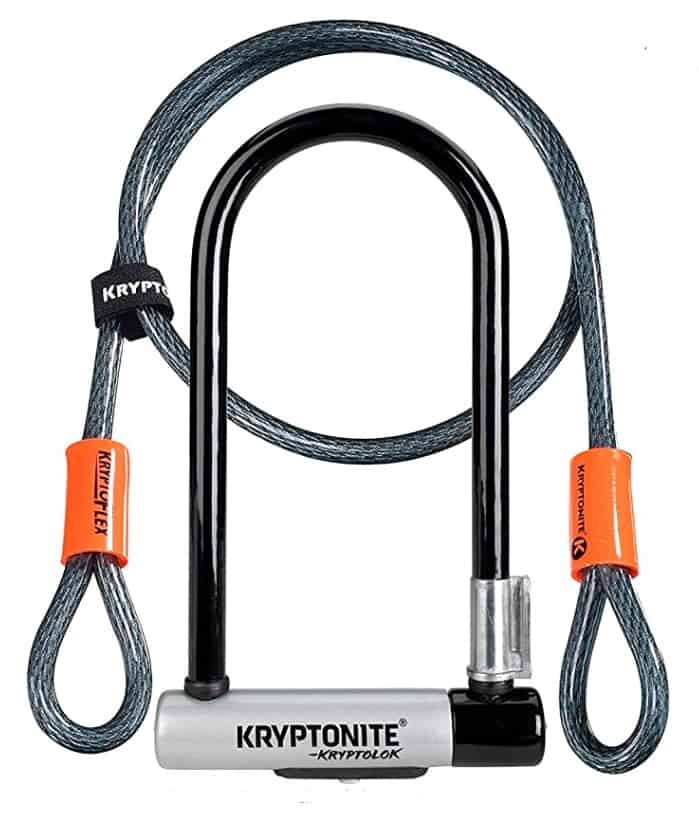
A well-equipped bicycle is quite a target for light-fingered miscreants and thieves. Certainly in Ireland, where I’m originally from, and places like the UK, where I’ve spent a lot of time, opportunistic and professional bicycle thieves are a major problem. Bear in mind these low-life types frequently carry bolt cutters to make short work of all but the sturdiest and most secure locks. Such locks are expensive but necessary to protect your valuable bicycle investment. See it as an important part of the overall package. And there are a few other things which we upright citizens need to bear in mind about these miscreants.
The first is if the bicycle isn’t secured to something that is virtually unmoveable, they may just pick the bicycle, lock and all up, throw it in the back of a truck, drive away and remove locks at their leisure. So the lock needs to be long enough to secure the bicycle to something that can’t easily be removed or broken.
The other thing is that key components that are easily removable from the bike, such as the wheels, custom saddles and so forth are also targets for thieves. Certainly in Dublin, Ireland, where I spent quite a few years, one frequently saw locked bicycles with missing components such as these. You just can’t leave anything to chance with these miscreant types. One answer is to have a long stout plastic covered steel or composite cable with loop ends to secure wheels, saddles, etc, to the main lock.
Shorter, more convenient plastic-covered loop-ended cables are also a great way of securing your helmet to the main lock for a less cluttered experience if you want to, say, go for a coffee while out on a cycling trip.
It depends on where you are. Certainly bicycle theft is a major problem in many countries, as it was in Ireland and the UK. Living as we do now in northern Portugal it is currently much less of a problem in most parts around here, but it is on the increase. We won’t speculate on likely reasons. Good locks are available that can be carried on a special holder that’s attachable to the bicycle. These types of lock would be a good choice.
10. Pump
One can ensure puncture-resistant tyres are fitted, which makes good sense, but I feel it is good insurance to carry a good quality portable hand-pump mounted on a special attachment on the bicycle. Cycling can take us quite a long way from base and if we end up with a flat tyre somewhere it can cause major inconvenience and cost.
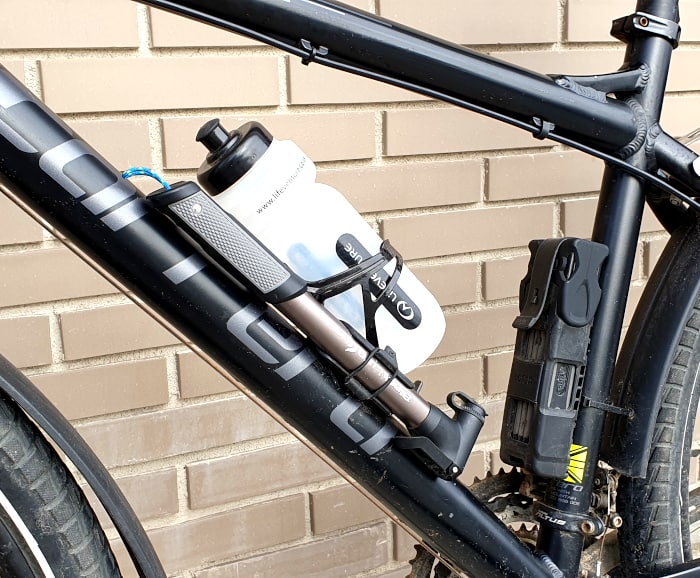
The photo shows my personal setup, including lock carrier. I also have a good quality foot pump and integrated pressure gauge at home base, which is easier and quicker to use than a hand pump. I would recommend one of these and can be bought at reasonable cost.
11. Carrier
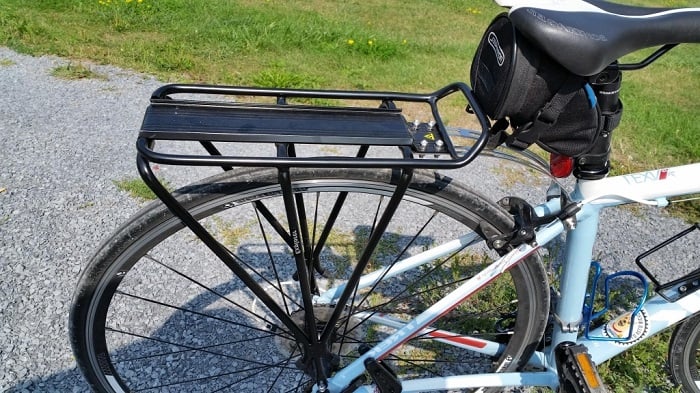
It won’t take long to aspire to longer cycling trips, maybe exploring some of the wonderful dedicated cycleways that are out there. Hopefully there are some near you. A good fitted carrier and elasticated tie-down straps are a great feature. There are a
whole range of custom bags available that can be attached to the carrier. However, I have found a good 20Lt day pack is sufficient to carry an extra layer, coffee thermos and some sandwiches. It’s easy to secure it to the carrier for a trip and use it as a convenient carry-about when leaving to bicycles to go walking about.
12. Water Bottle
A 1Lt water bottle and holder clip are a very useful feature on a bicycle. These are often conveniently combined with the hand-pump clip.
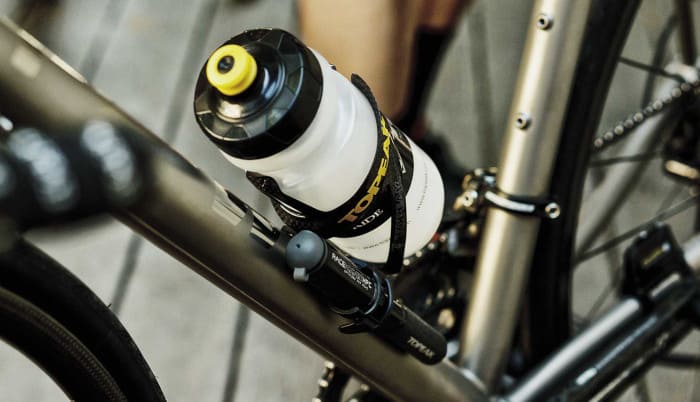
13. Quick Release Front Wheel
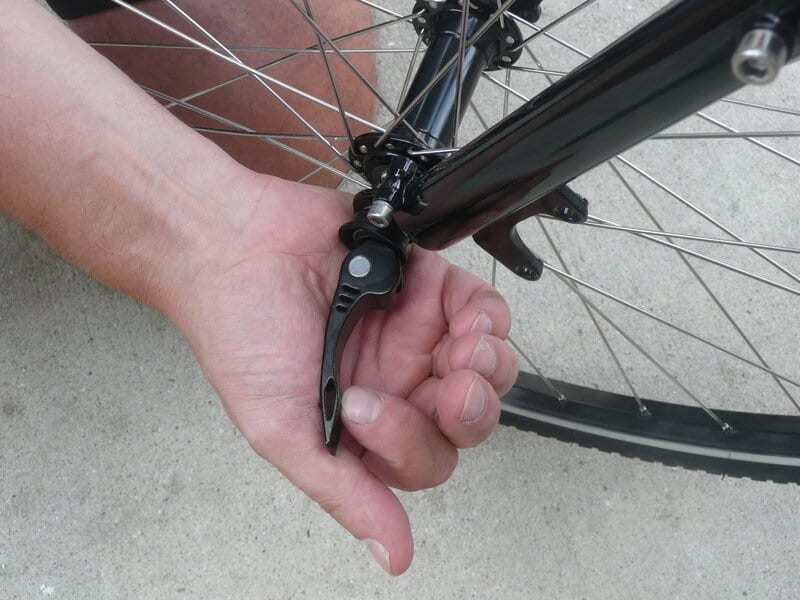
If one has fold-down seats in the back of one’s car, and one can find a way to fit the bicycles and other necessities in this space, it provides an enormous increase in the scope of cycling and trails that one can enjoy.
We have found that we can fit both our bicycles with the front wheels removed in the back of our small 5-door car with the back passenger seats folded down. This has given us the scope to enjoy the most wonderful paved river-side and old railway cycleways throughout northern Portugal. It’s just fantastic, and we’re looking at expanding that experience into the numerous magnificent cycleways in Spain and France.
I would recommend this approach rather than for example a roof rack to transport bicycles as they can be left more securely locked in the car if one wants to explore on foot. It also avoids the possibility of misjudging or forgetting height clearance somewhere, and causing much expensive damage to bicycles, roof-rack and car roof.
14. Mudguards
Very necessary if there is any possibility of cycling on wet trails as one can end up soaked by spinning wheels without mudguards throwing mud and water up, even if it’s not raining.
These go hand-in-hand with the quick-release front wheel if one wants to transport the bicycles in the back of one’s car.

Hence personally I would not choose a bicycle model with ready-fitted mudguards as the front unit will likely cause a problem fitting a bicycle in the back of a smaller car with the front wheel removed. Good, removable plastic mudguards are available as an after-market product and are easily fitted and removed. Only the front mudguard would need to be removed and refitted each time.
15. Under-Saddle Bag
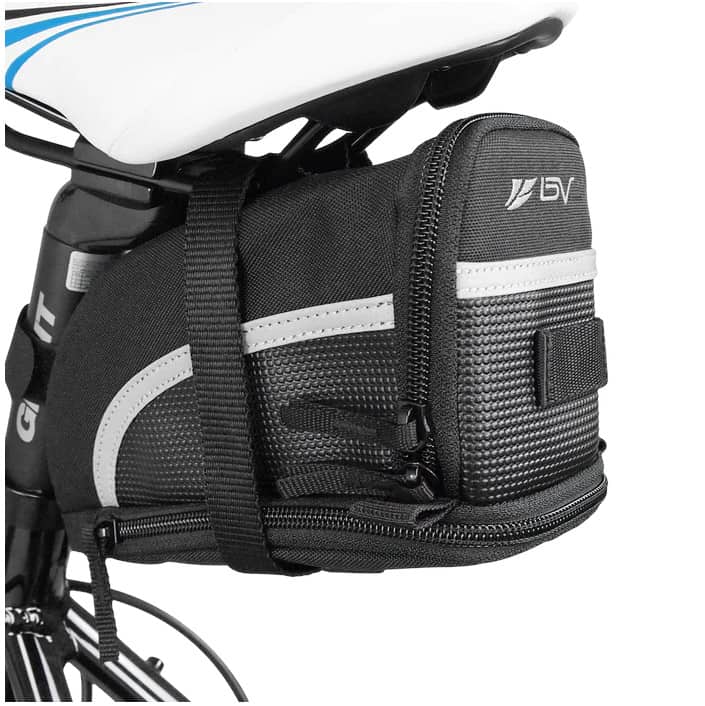
This is a small zipped bag that can be attached underneath the saddle, to the saddle post, generally by velcro strips. It is very convenient to carry phone, wallet, keys, etc., when one is enjoying a shorter trip where you don’t need to carry a lot of extras. Inexpensive and very convenient. Make sure to carry your compact multi-tool set mentioned below, it can save your day!
16. Stand
A stand for the bicycle can be very convenient when there is nothing suitable to lean the bicycle against and you need to be hands-free. It’s a much better option than just putting the bicycle on its side on the ground, or worse, leaning it against something that is unsteady and it falls over.

And Finally…
As a possibly useful aside, there are a few necessaries that any self-respecting cyclist should have available.
The first would be a small range of tools for minor adjustments and maintenance. Even if only one of the very clever and convenient multi-tool sets that are currently available for cyclists. It’s a very good idea to carry this multi-tool if possible, for example to make small adjustments to saddle height, tighten up a loose bolt or nut here or there, etc. The Allen keys or small cross-headed screwdriver are usually the saviours!
Finally, an aerosol can of good chain lubricant as a good bicycle will have a good chain, and it needs to be looked after. If you hear squeaks from the chain as you are cycling, then it’s well past time for some lubricant and it’s useful life is being compromised! In addition, there should be a conventional puncture repair kit available at home base. Many tyres are tubeless and puncture resistant these days, but you never know, and quick puncture repair is a skill any self-respecting cyclist should have. Be safe, be visible, be alert and enjoy your cycling adventures!


